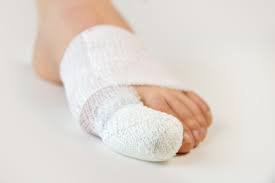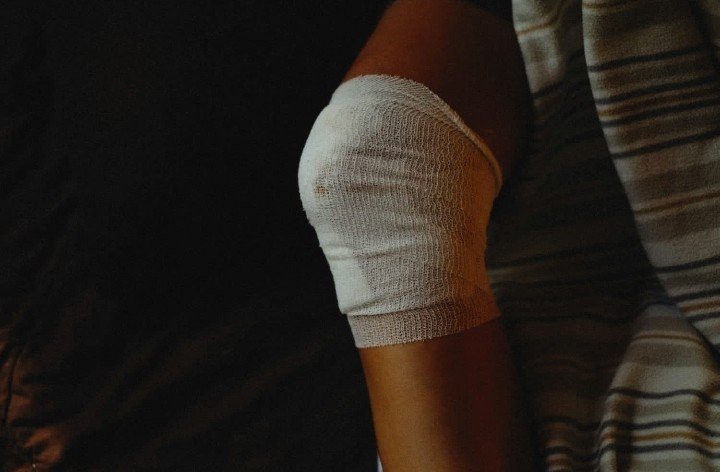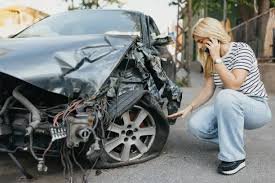Sprained Toe Treatment – Workout Injuries
One of the first injuries I suffered when I started trying to get back in shape was a sprained toe. I can hear you guys laughing at me right now. Like, who get’s a sprained toe, right? That’s exactly what I wat thinking to myself.
I happened in the gym when I stubbed my toe against one of the machines. My guess was my big toe hit it first but was bent a bit which is why this happened. The only thing I can tell you is that I was glad it wasn’t broken or dislocated, because it really hurt.
It was quite difficulty to walk because we’re used to pushing off of our big toe when we walk or run. I did have an X-Ray on it a couple of days later when it kept bothering me. Thank goodness that came out negative. The funny thing was it didn’t hurt that much after but really worsened a few hours later.
As you’d expect I went digging around the internet to see what I had and researched about it. Of course the doctor had already given me the “what to dos” and “don’t’s”, I always like knowing for myself.
So hopefully this goes out to help anyone who isn’t sure what’s wrong with their toe.
What Is A Sprained Toe?
A toe sprain is an injury that causes pain and swelling on your toe or toes. It can range from being mild to being really painful. For me it was bothersome also because I liked to bend my toes to click them. I know, it’s a bad habit, but it kind of loosens them up.
The toe sprain is considered a minor injury and often with proper care will heal on its own. Actually most sprains will heal on their own as long as you don’t put pressure on them or keep using them to workout or play sports. Home care Jobs
Comparing Toe Sprains with Dislocations and Broken Toes
They are definitely a lot less serious than broken toes or dislocated toes. Sprains are much easier to differentiate from dislocations because there is no disfigurement so to speak. I can tell you now that from seeing a few during my high school and college days from friends that any part whether it’s a leg, shin, wrist, shoulder or elbow, if it’s dislocated everyone can easily tell. It just won’t look right.
Broken toes are a bit different. They can manifest signs that are similar to sprains specially if the break is mild. You’ll see swelling, have pain and the area would be tender. However, when the break is bad and an obvious fracture is there, then you can see a disfigurement or displacement also.
The similarities between a broken toe and sprained toe can cause big problems. That’s because broken toes can cause permanent issues not just in the shape of the toe but also in the blood flow which can cause dizziness and disorientation.
This is why it’s very important to get an X-Ray of the injury done early to make sure there isn’t a fracture or break. One thing I’ve noticed though is with a sprain you’ll usually be able to move the limb, whether a toe, ankle or finger. It may be painful and difficulty because it’s swollen but doable, it will just feel ‘fat’ and ‘tight’. If it’s broken, chances are you won’t be able to move it at all or correctly. That’s one of the things the X-Ray technician also told me. Best Vertical Jump
Sprained toe symptoms
When it comes to symptoms. The first one is often pain and difficulty in putting pressure or force on the toe. Here’s a bigger list of the other toe sprain symptoms:
- Swelling
- Pain or tenderness
- Difficulty and pain when trying to move the toe
- Stiff and tight feeling
- Bruising
Sprained Toe Treatment
The good news is that treatment for sprained toes can be done at home. I remember having some ankle and wrist sprains back when I was younger and they got well on their own. But you can speed up the process by following some of the steps laid out below.
The best known treatment for toe sprains is R.I.C.E., that is Rest, Ice, Compression and Elevation. This is the common way of dealing with most sprains that don’t have any complications.
- Rest – rest means that lay off the toe. This obviously means staying way from sports, lifting weights or other activities where you need to put pressure on the toe or push off against it. Also learning to walk without using the injured toe helps. The less weight you put on it, the more time it has to rest and heal. This also translates to faster recovery. So minimize the amount of use of the specific toe.
- Ice – one of the first things that indicate of a sprain is swelling. Icing the sprained area is one of the best ways of reducing the inflammation of the tissues and lowering the swelling. This quickens the recovery time. The sooner you can put ice on the injury the better. Ice also numbs the body part making it feel less painful. Ice also helps increase the flow of blood into the injury because when you remove the cold from the area the veins get wider and allow more blood to rush into the injured part which helps heal it.
- Compression – if it’s your big toe that’s injured you can wrap the small bandage around it. For me, I didn’t bother doing this part. Compression helps limit the swelling but I’ve always had a high pain tolerance so even with larger sprains I never did much wrapping. The one thing you want to be sure of when wrapping is not to over tighten it since that can cut off the flow of blood to the area which is counter productive and if done for too long periods can be dangerous.
- Elevation – this is another method of reducing swelling since the excess fluid that causes the swelling moves away from the foot area due to gravity. Keeping it elevated also makes sure that you’re not putting any pressure on the injured toe giving it time to rest and heal.
Other Treatment Tips
Part of keeping pressure off the toe is also keeping it protected. This means not getting it stubbed or jammed again while injured as this will worsen the injury and lengthen the recovery time. I remember re-jamming a sprained finger because I continued to play basketball with it during high school and instead of taking a couple of weeks to heal it took something like a month to do so.
One last thing the doctor did give me was a prescription for pain medication. He told me to go take some if the pain bothered me. I didn’t have to use it, thankfully. Though I don’t often do because I do have I high pain threshold (though that’s not always a good thing, but that’s a story for another day).
Conclusion
A sprain toe is bothersome, painful and can be scary. It is important to have it quickly diagnosed to make sure it is in fact a sprained toe, since it may be a more serious injury. Treatment often can be done at home implementing the R.I.C.E. method. And it should take a week to 3 week to heal for most of us depending on the extend.
One final thing that’s important to remember is that if the injury does not show any improvement in 2 weeks time, make sure to go back to the doctor for a follow up. It may be a something more serious or could just be slow to recover. Only the doctor can make sure, so go see him if it is a non-healing injury.







